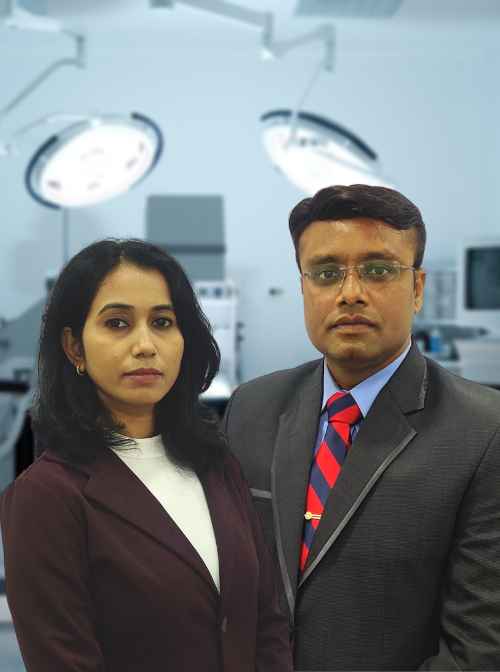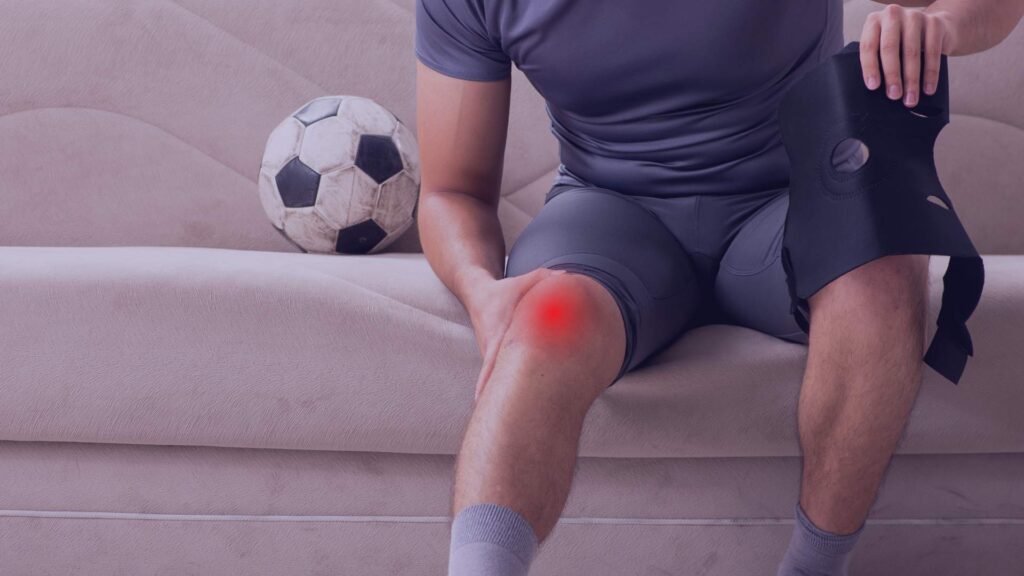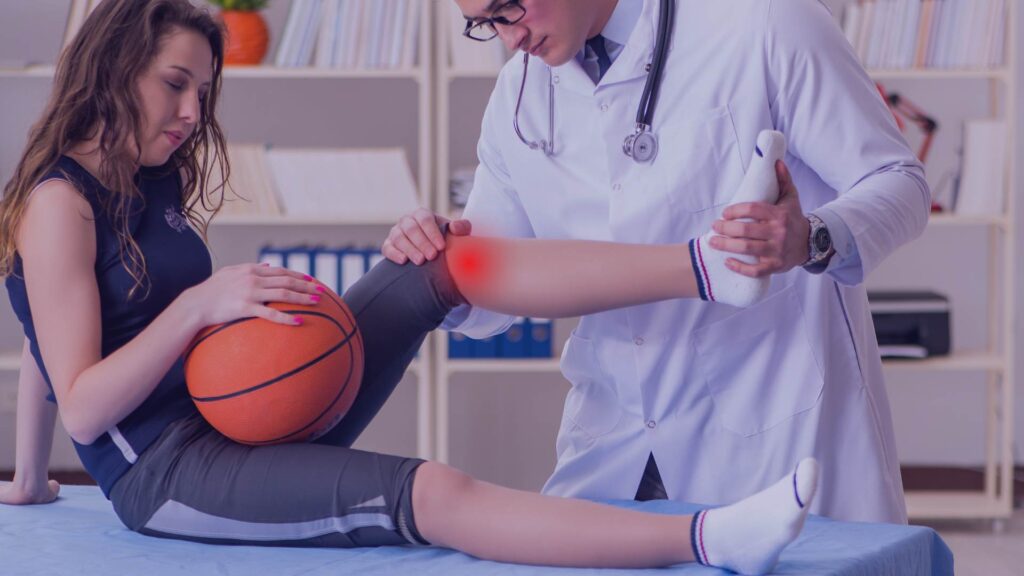Sports Medicine Doctors, Dr. Jagdish Patil and Dr. Minakshee Patil, have more than 10 years of experience in treating various cases of acute & chronic pain of sports injuries.
Dr. Jagdish Patil along with Dr. Minakshee Patil started Asian Spine & pain Centre in Pune to provide comprehensive non-surgical pain treatment options for all major chronic pain conditions like back pain, slipped disc, sciatic pain, knee pain, joint pains, arthritis, neuralgic pain, headaches and migraines. They are specialized in treating sports injuries like, Sprains and strains, Knee injuries, Swollen muscles, Achilles tendon injuries, Pain along the shin bone, Rotator cuff injuries., Fractures (particularly stress fractures), Dislocations etc.
Sports Medicine is a newest branch of medicine that bridges the gap between science and practice in the promotion of physical activity and health, as well as the scientific assessment, analysis, and comprehension of athletic performance; sports injury prevention and treatment; exercise for health; drugs in sports; and training and dietary advice.
The risk factors for sports injuries include:
- Not using the correct exercise techniques.
- Overtraining, either by training too often, too frequently, or for too long.
- Changing the intensity of physical activity too quickly.
- Playing the same sport year-round.
- Running or jumping on hard surfaces.
- Wearing shoes that do not have enough support.
- Not wearing the proper equipment.
- Having had a prior injury.
- Having certain anatomical features specific to each joint or poor flexibility.
- Taking certain medications, such as fluoroquinolones, a class of antibiotics linked to tendinitis and tendon rupture.
Basically, any sports injury is divided into acute (immediate or sudden) and chronic (over a period of time) injury.
Common Musculoskeletal Sports Injuries:
Acute fractures: Injuries that break through the skin to the bone, which are known as compound fractures, are especially serious because there is an increased risk of infection. Most acute fractures are emergencies.
Stress fractures: Stress fractures occur largely in the weight-bearing bones of the lower extremity. These include the femur, tibia and fibula, and foot bones.
Dislocations: Contact sports such as football and basketball, as well as high-impact sports and sports that involve significant stretching or falling, cause most dislocations.
Tendonitis: Tendinitis is inflammation of a tendon, a flexible band of fibrous tissue that connects muscles to bones. It often affects the shoulder, elbow, wrist, hip, knee, or ankle.
Bursitis: Bursitis is inflammation of the bursae (plural of “bursa”), small, fluid-filled sacs that act as cushions between a bone and other moving parts, such as muscles, tendons, or skin.
Sprain: Sprains are stretches or tears of ligaments, the bands of connective tissue that join the end of one bone with another.
Strain: A strain is a twist, pull, or tear of a muscle or tendon, a cord of tissue connecting muscle to bone. Athletes who play contact sports can get strains, but they can also happen from repeating the same motion again and again, as in tennis or golf.
- Shoulder Injuries:
- Rotator cuff injury
- Impingement
- Instability
- Knee Injuries:
- Runner’s knee. Also called jumper’s knee or patellofemoral pain syndrome, this condition causes pain or tenderness close to or under the kneecap (patella) at the front of the knee.
- Fracture
- Dislocation
- Torn ligament: ACL injuries (Anterior Cruciate Ligament)
- Meniscal Tear
- Torn Tendon
- Elbow Injuries:
- Tennis elbow (lateral epicondylitis)
- Golfer’s elbow (medial epicondylitis)
- Ulnar collateral ligament injury
- Leg Injuries:
- Groin pulls
- Hamstring injuries: most common in cricketers
- Shin Splints
- Ankle Injuries:
- Ankle sprains
- Ankle tendonitis
Any sports player will suffer some sort of injury in his lifetime. To achieve preinjury strength or mobility, an athlete must consult expert sports medicine doctor. Dr. Jagdish Patil & Dr. Minakshee Patil of Asian Spine & Pain Centre, Pune is the top sports medicine doctor in Pune.
You need to consult them if you have;
Symptoms of an acute injury include:
- Sudden, severe pain.
- Extreme swelling or bruising.
- Not being able to place weight on a leg, knee, ankle, or foot.
- Not being able to move a joint normally.
- Extreme weakness of an injured limb.
- A bone or joint that is visibly out of place.
Symptoms of a chronic injury due to overuse:
- Pain when you play or exercise.
- Swelling and a dull ache when you rest.
You can consult Dr. Jagdish Patil & Dr. Minakshee Patil at Asian Spine & Pain Centre; Located at 304, Choice C Apartment, near Ruby Hall Clinic, Bund Garden Road, Pune 01 for any time of sports injury treatment and rehabilitation. At Asian Spine & Pain Centre, you will get world class facilities for physiotherapy, imaging and pharmacy services under one roof. To book appointment, call at 7218-113-113
M.B.B.S., M.S.(Orth), FIIPM, FIMISS
Endoscopic Spine & Joint Replacement Surgeon
Pain management Expert
M.B.B.S., M.D., FPCI, FIPM
Interventional Pain Management Expert
“World Class Super Speciality Centre for Spine, Joints, Pain & Regenerative Therapies”
Physiotherapy
Procedure Room
Pharmacy
X-ray & Imaging room
Emergency Care
Online Consultancy
FAQs:
Yes, in more than 90% cases with chronic knee pain, a noninvasive or minimal invasive procedures can be used to avoid surgeries. But in 10% cases, surgery is unavoidable and can provide long term benefit. So trust our experts at Asian Spine & pain Centre to provide accurate diagnosis and pain management treatment for your chronic knee pain.
The goal / aim of sports medicine is to maintain, sustain, and at times to regain peak physical fitness i.e., adaptability to stress, physical and mental. Main functions of sports medicine are promotive, educative, formative, recreative, competitive, therapeutic and rehabilitative in nature. At Asian Spine & Pain Centre, we provide complete care of sport sports injuries for athletes in Pune.
Yes, in most cases, physiotherapy is must to regain complete joint mobility and muscular strength. It can be required after any orthopedic treatment either surgical or non-surgical. At Asian Spine & pain Centre, we have a tea, of experienced physiotherapists to provide complete care.
You might have serious back problem or emergency for which you need immediate orthopedic care. Following signs can help you to identify these serious situations – Sharp pain rather than a dull ache, Radiating pain, Sudden weakness in the legs, incontinence, numbness or needle like pain in the groin.
Yes. X-rays are often a good tool for determining if arthritis exists and, specifically, what type. Common types of arthritis include rheumatoid arthritis, psoriatic arthritis, and osteoarthritis. Early in the disease process, more sophisticated imaging may be necessary, especially MRI. We do provide X-ray imaging services at Asian Spine & Pain Centre.
If you’re experiencing chronic pain, a doctor may recommend that you have a nerve block, a temporary or permanent procedure that disrupts specific nerve activity. It can help diagnose or treat certain types of neuropathic pain, or pain caused by nerve dysfunction or damage. At Asian Spine & pain centre, we use nerve block therapy in selected cases of chronic pain.
As is often the case, recovery time can vary from person to person depending on the location of the surgery, the type of surgery required and the lifestyle of the patient. However, most patients are able to leave the hospital the same day and are typically able to return to their active lives within 4-6 weeks after surgery. However, some are back to normal in 1-2 weeks.
You shouldn’t downhill ski or play contact sports such as football and soccer. In general, avoid sports that require jerking, twisting, pulling, or running. You should be able to do lower-impact activities, such as hiking, gardening, swimming, playing tennis, and golfing.
Arthroscopy is a procedure for diagnosing and treating joint problems. A surgeon inserts a narrow tube attached to a fiber-optic video camera through a small incision — about the size of a buttonhole. The view inside your joint is transmitted to a high-definition video monitor. Arthroscopy allows the surgeon to see inside your joint without making a large incision. Surgeons can even repair some types of joint damage during arthroscopy, with pencil-thin surgical instruments inserted through additional small incisions.



